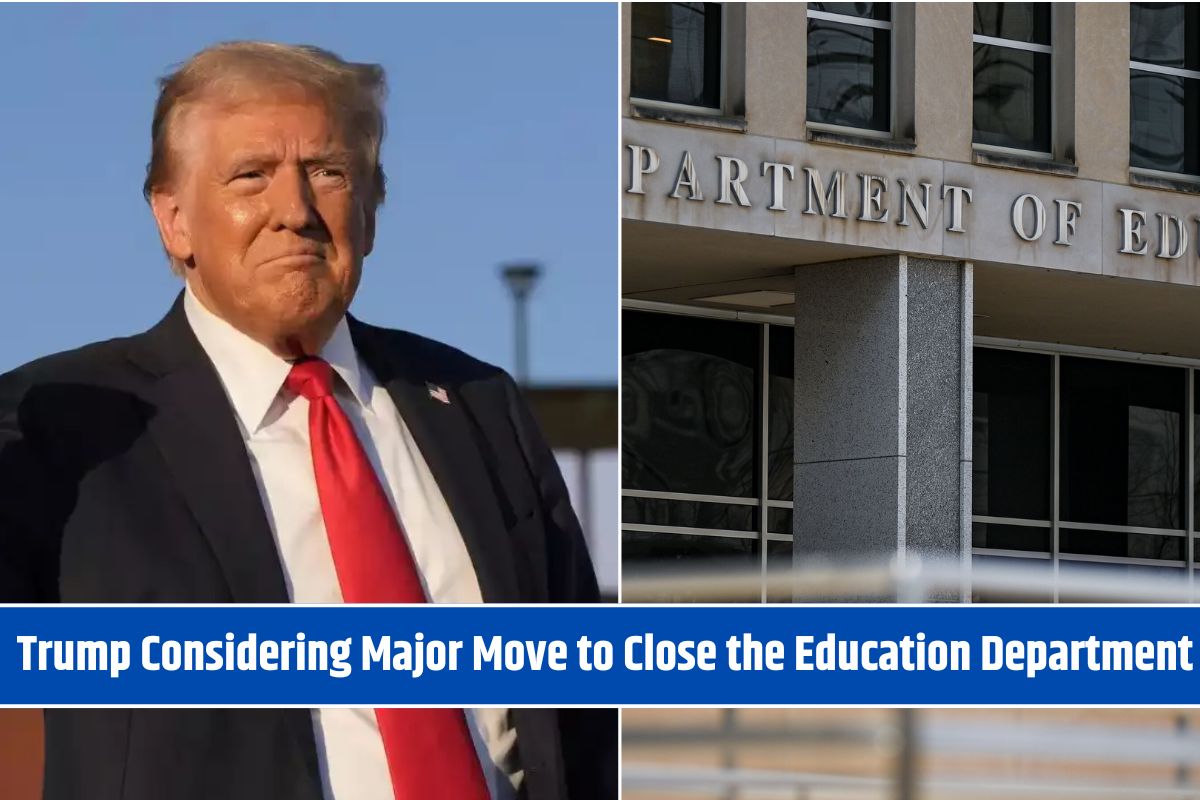President Donald Trump is reportedly exploring the possibility of taking executive action to dismantle the U.S. Department of Education (DOE), according to multiple sources. While no immediate actions are planned, this move aligns with the administration’s ongoing objective of reducing federal bureaucracy, a key goal shared by Trump and Department of Government Efficiency (DOGE) chief Elon Musk.
The Wall Street Journal first broke the story, highlighting that Trump’s decision would involve eliminating some programs and redistributing others to different federal agencies. The DOE, created in 1979, is responsible for tasks like distributing federal financial aid, enforcing non-discrimination policies, supporting vocational training, and administering programs for disadvantaged and special needs children.
Despite its broad scope, federal funds from the department account for less than 10% of public school funding, as most funding comes from state and local sources.
Programs and Potential Changes
Key programs under the DOE include Pell Grants, federal student loans, and the Individuals with Disabilities Education Act (IDEA). These programs help millions of students by ensuring equal educational opportunities. The fate of these programs remains unclear, though sources indicate they could be transferred to other departments.
For example, the Project 2025 report, developed by the conservative think tank Heritage Foundation, proposed moving the administration of student loans and certain grants to departments like the Treasury, Health and Human Services, and Justice. Similarly, Republican Sen. Mike Rounds of South Dakota has proposed legislation to abolish the department and shift loan programs to the Treasury Department.
Challenges to Eliminating the DOE
Dismantling the DOE is not a simple process. Although Trump can reduce the department’s influence through executive actions, eliminating it entirely would require congressional approval. Programs established by legislation, such as IDEA and Title I funding for economically disadvantaged schools, would need new laws passed to modify or relocate them.
Additionally, many critics argue that federal oversight ensures uniform quality and protects vulnerable students. Without it, they fear discrepancies in educational standards among states could increase.
Trump’s Previous Stance on the DOE
Trump’s interest in eliminating the DOE is not new. During his 2016 campaign, he voiced intentions to shut down the department but did not pursue the plan during his first term. In 2023, Trump reiterated his goal of closing the DOE and returning control of education to the states. He stated, “One other thing I’ll be doing very early in the administration is closing up the Department of Education in Washington, D.C., and sending all education and education work and needs back to the states.” He added that states would manage education more effectively than the federal government.
On the policy front, Trump recently signed an executive order prioritizing federal funding for school choice programs, a long-standing Republican initiative aimed at giving families alternatives like charter schools and vouchers for private schools.
Linda McMahon as Education Secretary
Linda McMahon, a former executive of World Wrestling Entertainment and member of the Connecticut State Board of Education, is Trump’s nominee to lead the department. She has yet to be confirmed by the U.S. Senate, but her leadership could play a key role in any changes if the DOE remains intact during the transition.
Historical Context
The U.S. Department of Education was established by President Jimmy Carter in 1979 to centralize federal efforts in education and improve national educational outcomes. However, many conservatives have long believed that education should be handled at the state and local levels, criticizing the department as an unnecessary layer of federal oversight.
As Trump considers this significant restructuring, debates are likely to emerge about the balance between state and federal control over education and how the redistribution of responsibilities could impact students nationwide.
